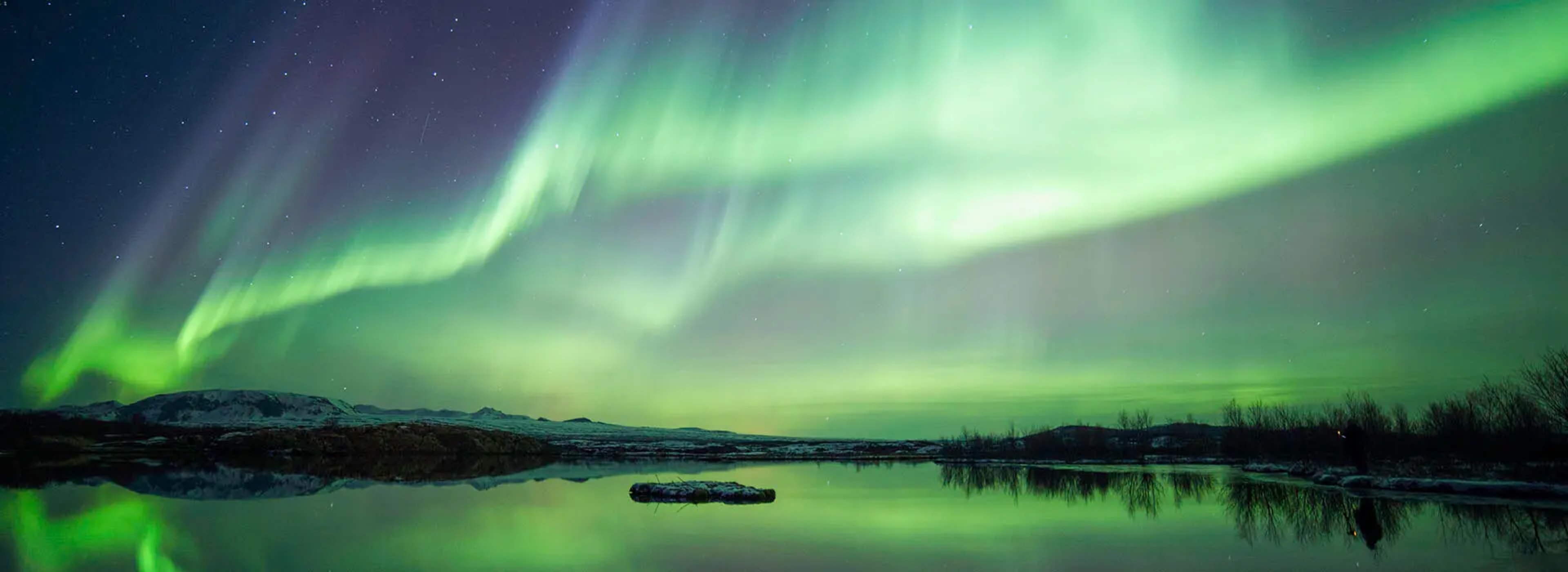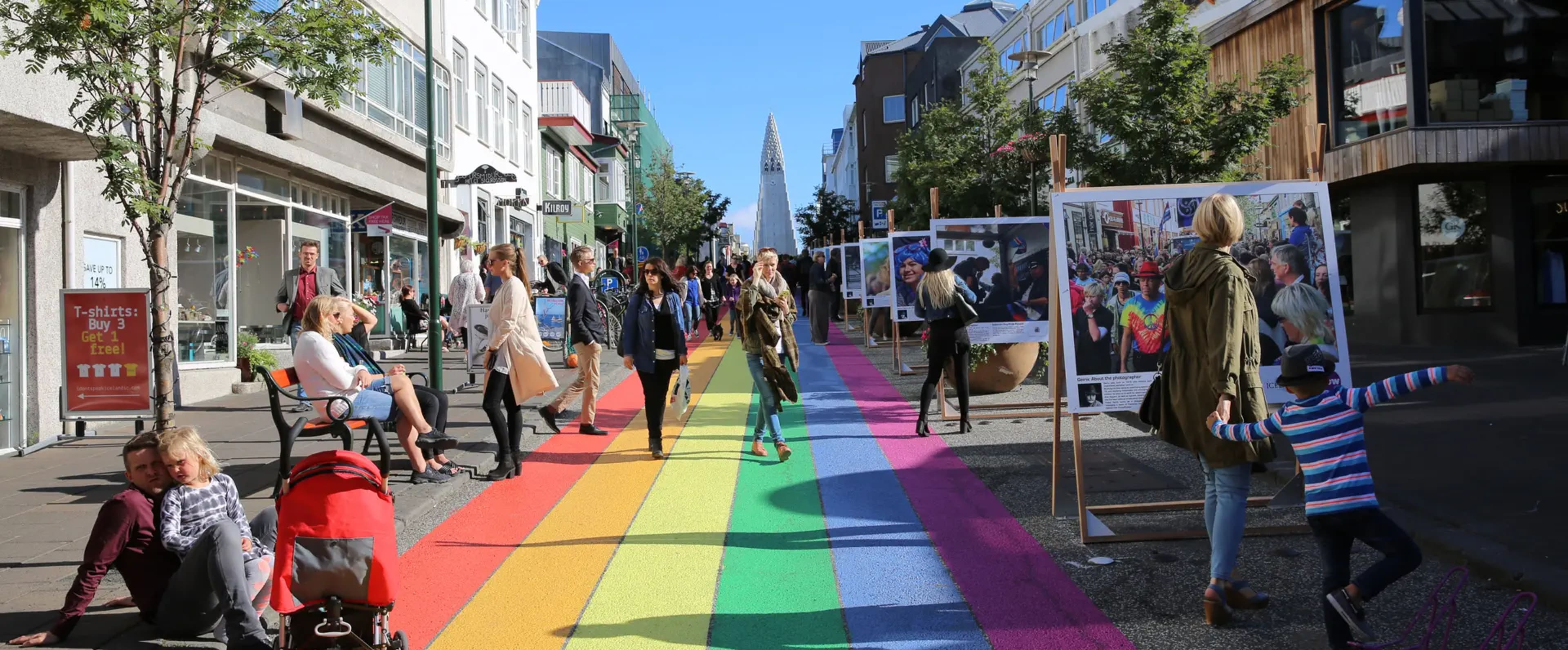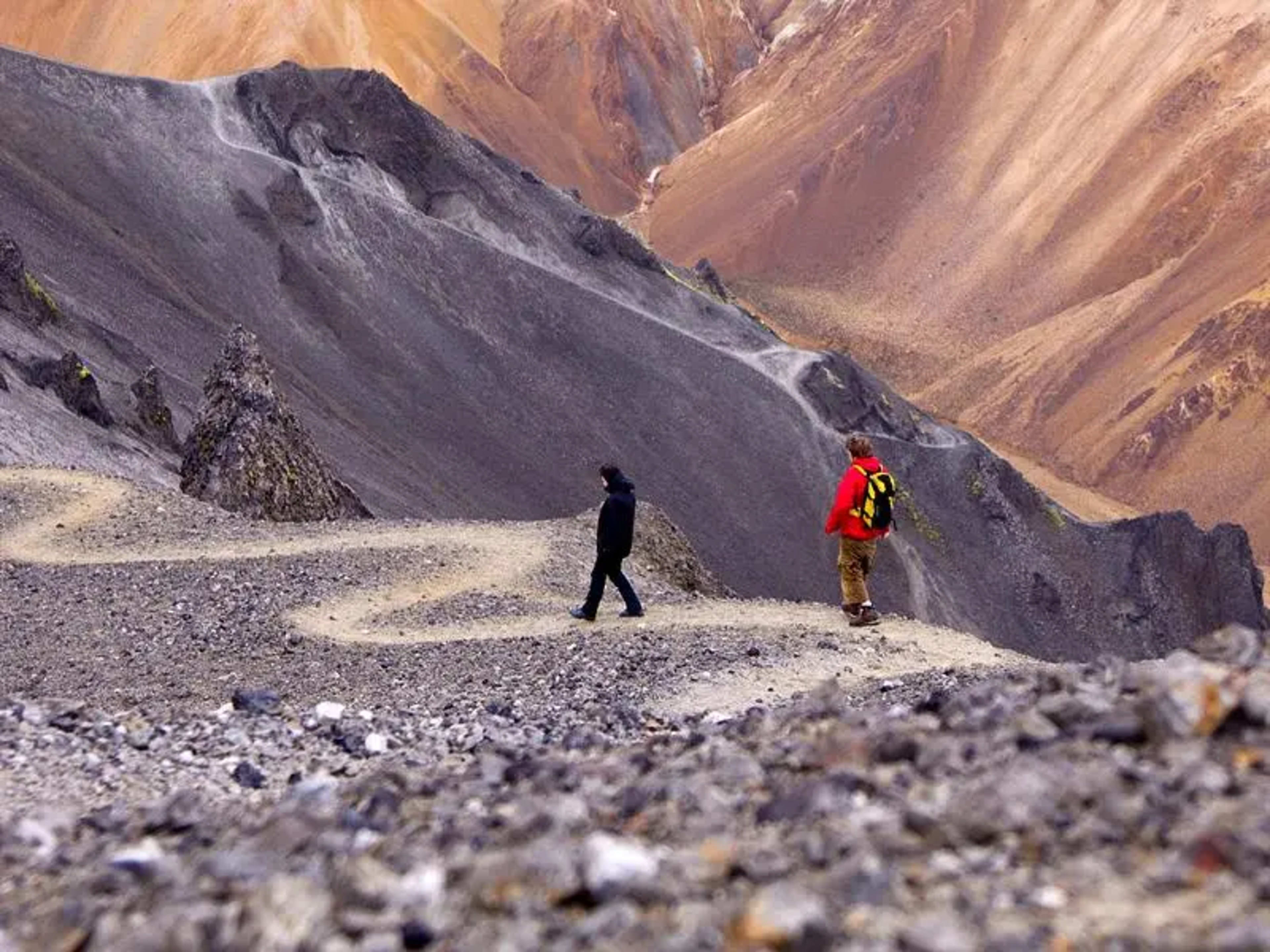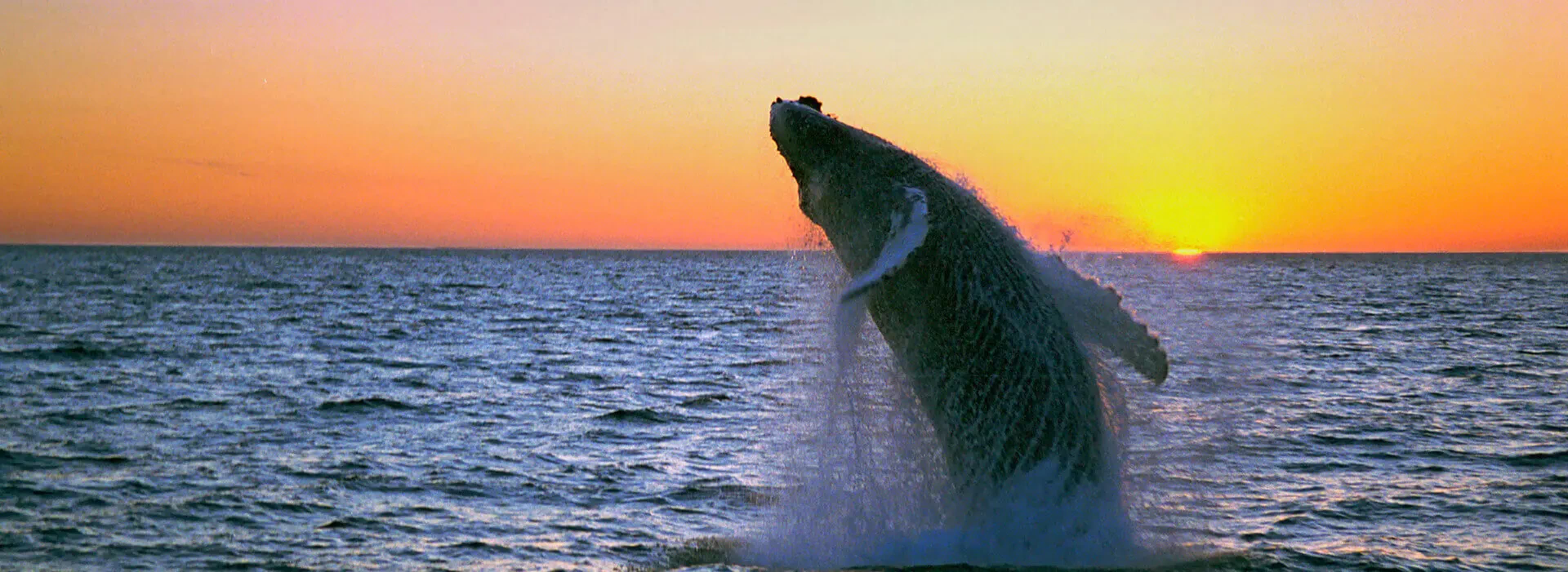You can’t go wrong when choosing a trip to “The Land of Fire and Ice”. Iceland is a great year-round destination! Whether you’re visiting during the snowy months or at the height of summer with its never-ending days, you can experience Iceland’s stunning beauty.
If you’re wondering when to visit Iceland, it’s all broken down for you here. We explain each season’s benefits as well as when to go to Iceland for specific pursuits. Only you can decide which matches you best!
Visit Iceland in summer – June to August
The summer months have the best weather of the year. Expect less precipitation, a much higher number of daylight hours, and the warmest temperatures. Generally, Iceland experiences highs of 15°C (59°F) and lows of 9°C (48°F) at this time of year.
That means if you’re not too keen on cold temperatures, this is the ideal time for you to visit. You could take the opportunity to go hiking and explore remote corners of the country in the midnight sun.
Take advantage of the sunny days, that go on and on, to explore to your heart’s content. Drive the Ring Road around the island in less time. Having longer days means you can cover more distance.
Or you could take all the time you want and really soak up the atmosphere and gorgeous landscape of glaciers, lagoons and jagged mountains.
- Check out these summer tours to Iceland for more inspiration.
- Blog: Iceland in summer – must sees and must dos.

Visit Iceland in fall – September to November
This is the time of year when the weather starts to drop, and the days become shorter. This shoulder season is ideal if you are seeking smaller crowds and don’t mind cooler temperatures.
Traveling to Iceland during the fall period means witnessing the transition from summer to winter. As the darkness slowly sets in, you’ll start having good chances to spot the Northern Lights. There are also good chances of snowfall the later it gets in the season.
At this time of year, you could still take on a road trip around the country. Or it’s the perfect time to visit the Golden Circle and south coast in more depth.
Visit Iceland in winter – December to February
The winter months are the coldest of the year, as you would expect for a northern country. But don’t let the winter weather in Iceland put you off.
From mid-October, it can be cold, dark, and windy, but thankfully the climate is tempered by the ocean and the Gulf Stream. That’s why it won’t be as cold as you may expect from the ice-land. Between December and February, average temperatures hover around -2°C (28°F).
At this time of year, however, the weather becomes less stable. It means you may encounter all seasons in one day. Always be prepared for it all when visiting Iceland in winter: storms, snow, rain, and wind.
During this snowy season, you may prefer a city break with guided activities from Reykjavík. It’ll allow you to settle into one location, but still see the highlights of the surrounding regions.
If you feel adventurous or want to test your winter driving skills, opt for a self-drive adventure. Take the wheel to see specific regions or tour around the country.
Photograph the glittering waterfalls, admire the snowy mountains, and hopefully catch sight of the colorful Northern Lights in the night sky.
- Browse these winter travel packages in Iceland.
- Blog: Iceland in winter – must sees and must dos.

Visit Iceland in spring – March to May
Did you know that the country celebrates the “First day of summer” in April? That’s because it’s an exciting time of revival and reawakening.
The spring season is the most varied time of the year, transitioning from snowy winter weather to bright and sunny days. From March, the temperature in Iceland starts to climb back up and so does the number of daylight hours.
This is another ideal time to visit if you’re looking to get away from the crowds and enjoy Iceland in a bit more peace. Relax in the hot springs or heated pools after days of exploring around the south coast. This is a great time for birdwatching as well.
Best time to visit Iceland for the Northern Lights
The Northern Lights, also called Aurora Borealis, is a natural phenomenon that occurs all year long. However, in summer you’ll rarely see it, thanks to the midnight sun.
From late August, you could catch a glimpse of them as the nights start to lengthen. For the best sightings, travel to Iceland in winter, between October and March.
Auroras are one of the world’s most beautiful natural sights to behold.
The best way to see them is standing under a clear dark sky, free from city light pollution. This location would preferably be somewhere between the 65th and 72nd parallel north. That area is called the “Northern Lights Belt” because it has some of the strongest solar activity necessary to see the beautiful dancing lights.

Best time to visit Iceland for a road trip
Dreaming of taking on the Ring Road, the affectionate name for Route 1 and the highway that circles Iceland? Just imagine putting on your favorite playlist and then seeing the glaciers and mountains ahead of you…
- Take a look at these Iceland Ring Road itineraries.
The summer is the best time to go on a road trip in Iceland, and there are many reasons for that.
Thanks to the long daylight hours of summer, you could spend more time exploring or driving each day. Wake up early if you want to set off and see a popular attraction in relative quiet or drive until the evening to reach your destination.
There is simply more time to do outdoor activities in summer!
The other bonus of this season is that more remote routes and areas of Iceland are accessible at this time of year. This includes the stunning Westfjords, which are often cut off during the winter.
If you’re keen to visit the highlands, this is the ideal time as mountain roads are shut the rest of the year.
- View all self-drive tours of Iceland for your dream road trip.
Best time to visit Iceland on a city break
You can enjoy a stay in Reykjavík for a short city break all year long. The capital city is buzzing and thriving whatever the season, with fun events, excellent restaurants, and plenty of attractions to visit.
Although we do recommend booking excursions to see more of the surroundings in the Reykjanes, west and south coast regions. All within a day or two’s drive, you could discover some of Iceland’s biggest highlights and jaw-dropping scenery.
What you want to do on your city break will influence when you visit Iceland.
To go on walks on the beach and maybe even dip your toes in the sea, come in summer. Want to witness the Imagine Peace Tower in honor of John Lennon? Visit Reykjavík in the fall. Many museums, like the Perlan’s Wonders of Iceland exhibition, are open all year long.
For the northern lights, always visit the capital (and book a tour outside the city!) between October and March for the best sighting opportunities.

- Related: Iceland in the Fall – Your Guide.
Best time to visit Iceland to go camping
Camping in Iceland will be something you remember for a long time. Wake up in the quiet of the stunning Icelandic countryside. It doesn’t get much better than that!
Most camping sites (and you should only camp in designated areas) are open between May and September. In more remote regions, you may find they have restricted times between June and August. That may be due to roads not being accessible to reach them until the summer.
- Pick your favorite camping tour in Iceland to start planning your adventure.
Best time to visit Iceland for hiking
You probably won’t be surprised to learn that summer is the best time to travel to Iceland if you want to take on its rugged mountains on foot.
Hiking on his volcanic island will be unforgettable, so if you’re a keen mountaineer, don’t forget your gear at home. Come between late May and September for the best weather and most accessible mountain trails. You’ll also enjoy long days to take advantage of the paths and gorgeous views.
You may find that if you come earlier or later in the year, mountains will have snow on the top and make hiking more perilous. Activities such as hiking in Iceland are extremely dependent on weather after all. Always make sure to keep yourself safe!
Perhaps you also have your eye on Landmannalaugar in the highlands. Hiking in the highlands is an incredible experience! However, visiting this remote region is limited by the opening of the road leading into it. Usually, it opens around mid-June.
- Check out these hiking tours of Iceland.

Best time to visit Iceland for wildlife watching
It’s not just the landscape that is awe-inspiring in Iceland, but also the wildlife! The spring and summer are the best time of the year to spot two of the most famous animals that visit our shores.
The cute puffins and mighty whales.
Nearly 60% of the entire Atlantic puffin population spend their summers in Iceland. That’s 8 to 10 million puffins!
- See puffins for yourself on a 5-day trip to Iceland.
These adorable and clumsy birds start arriving in late April and head back to sea around early August. You’ll find them in largest quantities in the Westman Islands in South Iceland, Grímsey island in North Iceland, and the beautiful Westfjords.
Whales on the other hand are present all year long. But the summer is the best time to see them. This is when you’re most likely to spot minke, humpback, and sperm whales.
The waters are also usually less choppy at this time of year, making the experience better if you don’t have strong sea legs.
And even if you’re only in Reykjavík for a short city break, you could go whale watch from the capital.

Best time to visit Iceland for music festivals
Icelandic music is recognized worldwide and it’s no wonder! Some amazing bands come from this small nation, including Björk, Kaleo, Sigur Ros, and Of Monsters and Men, among many others.
Not only that, but it attracts talented acts from around the globe for its fun (and scenic!) music festivals. Look out for:
- Iceland Airwaves in early November
- Secret Solstice Festival in late June
- Þjóðhátíð in early August
Do you feel ready to pick which season or month is best for you now? We hope so! Your next vacation could be one of “fire and ice”.
Whether you pick a road trip, city break, camping adventure, or private tour, you’re sure to find something to your taste with Iceland Tours. You can easily book and tailor your package by selecting your preferred car, accommodation, and optional activities.
When you book with Iceland Tours, you can expect quality service as well as tried-and-tested routes designed by locals.
When you’re ready to plan your Iceland break, browse our Iceland vacation packages.

About the author
Camila first travelled to Iceland in 2018 and it didn’t take long for her to fall in love with its culture, food and scenery. Throughout her life, she’s had the pleasure to live in different cultures and languages and absorb as much as possible from all her travels. You’re most likely to find her reading a good book in a local café or writing about the best spots to visit for top travel agencies.
View more posts by Camila